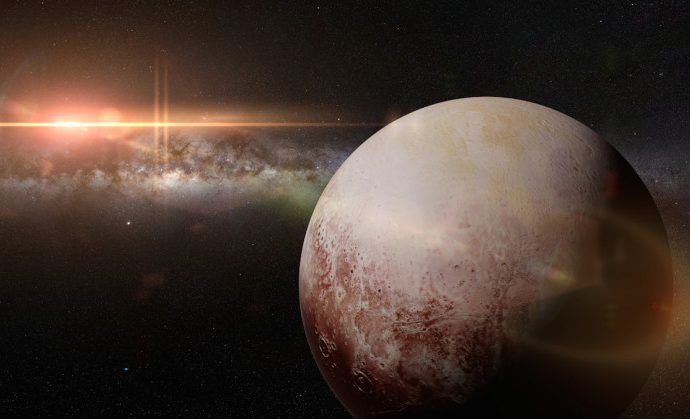One famous astrophysicist has said Pluto is his “favourite comet.”
Source: Interesting Engineering
Is Pluto a planet, or a dwarf planet? That’s the question. NASA Administrator Jim Bridenstine has just fired up the Pluto debate by saying he still believes the big icy space ball is a planet.
Some strongly support his claim, while others strongly disagree. Here’s a look at both sides of the argument.
Of course, Bridenstine’s comment is lighthearted, and it hasn’t changed Pluto’s official classification, but it has sparked up the debate on Pluto’s classification that has been going for over a decade.
Why was Pluto demoted to dwarf planet?
On August 24, 2006, researchers at the International Astronomical Union (IAU) voted to reclassify Pluto as a dwarf planet. No longer would it be referred to as a planet.
There are a few very compelling reasons why Pluto was demoted to the state of “dwarf planet.”
Pluto is not only the smallest object to have been officially classified as a planet in our solar system, but it is also smaller than some of the moons. In fact, the Earth’s moon is actually five times the mass of Pluto.

What’s more, more than half of Pluto’s volume is ice, meaning that if it was as close as we are to the Sun, a large part of it would melt.
Here is a video from famous astrophysicist Neil deGrasse Tyson on why Pluto is his “favorite comet.” – the ice plays a big part in this.
The real problems for Pluto came when the first object of the Kuiper Belt was discovered in 1992. This asteroid belt of icy space objects contained some significant discoveries, such as Eris (now also classified as a dwarf planet), which at first was thought to be bigger than Pluto.
Pluto is the biggest of the Kuiper Belt space objects, but how do we differentiate between them? The Pluto debate shows that it’s difficult to reach a consensus. At one point, IAU members considered changing the number of official planets in our solar system up to 12, including Ceres, the largest asteroid, and Pluto’s moon Charon.
What does Team Planet Pluto say?
While the above points hold true, Pluto does have its own multilayered atmosphere, weather, organic compounds, and moons, meaning it does greatly resemble bigger planets in our solar system.
Immediately following the IAU reclassification in 2006, scientists petitioned against the move. Some drew attention to the fact that the IAU has nearly 9,000 members, but only a few hundred were present for the Pluto vote.
As Science Alert points out, Planetary scientist Alan Stern, leader of NASA’s New Horizon’s mission, has clearly stated his disappointment with the decision to reclassify Pluto on several occasions.
“My conclusion is that the IAU definition is not only unworkable and unteachable, but so scientifically flawed and internally contradictory that it cannot be strongly defended against claims of scientific sloppiness,” he wrote in September 2006.
“The New Horizons project, like a growing number of the public, and many hundreds if not thousands of professional research astronomers and planetary scientists, will not recognise the IAU’s planet definition resolution of Aug. 24, 2006.”
Stern also debated Ron Ekers of the IAU on Pluto’s status just this year.
While the IAU doesn’t seem like it’s going to budge on Pluto’s classification any time soon, Bridenstine has certainly added coal to the fire. Team Planet Pluto certainly won’t back down either – the cosmic debate continues.

































Leave a Comment
You must be logged in to post a comment.